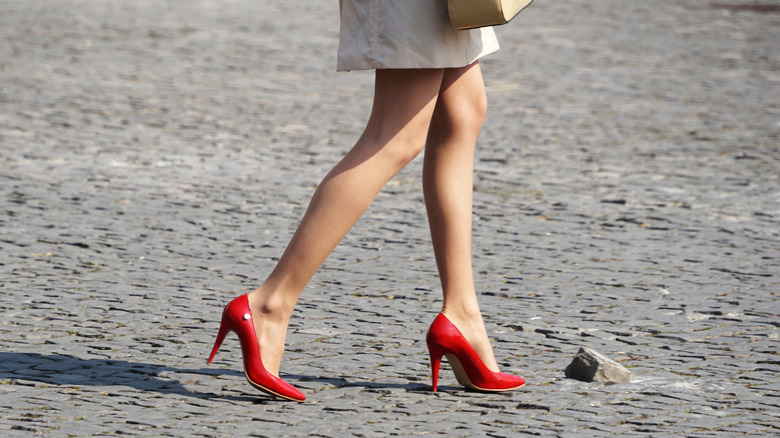Wearing One Popular Type Of Footwear To See Greece's Antiquities Is Illegal And Can Earn You A Big Fine
Greece has thousands of years of history and some incredible ruins and antiquities to show for it. Getting a chance to walk around places like the Acropolis in Athens, the Epidaurus Theater, and Greece's other top ancient sites is like stepping back in time. Your feet actually get a chance to stand on the same stones as the ones our ancestors once did, making for an incredible experience. However, if your feet happen to be in one popular type of footwear, you may be banned from visiting these sites.
If you're planning a visit to Greece, you should probably leave your high heels at home. If not, you risk a fine of almost $1,000. The reason is that these shoes can cause damage to the sites. The heel could hit a crack and cause it to widen, or a sharp toe could break something. From a safety standpoint, that "something" could be your own ankle, in addition to the structures.
Believe it or not, high heels have been banned at some ancient Greek sites since 2009. Back then, Director of Greek Prehistoric and Classical Antiquities Eleni Korka told the Daily Mail, "Female visitors must wear shoes that do not wound the monuments. These monuments have a skin that suffers and people must realize that." The rule was set in addition to a ban on bringing food and drinks to these sites.
All about Greece's ban on high heels at ancient sites
The ban on high heels at ancient Greek sites makes sense. The Acropolis, for instance, has been around since the 5th century B.C. One tourist wearing the wrong shoes and stepping on the wrong spot could damage a site that has been around for millennia. Think of all the feet that walk there each day, multiplied by 365 days, then by years, decades, and centuries. In fact, at this particular site, Greece recently capped the daily visitor limit at 20,000 to protect the structure. While there are plenty of pictures out there of the Acropolis with no people, in reality, it's usually packed solid with tourists. (Travel pro Rick Steves suggests visiting the Acropolis in the evening when it's less crowded.)
Injury is another reason to not wear pointy, stiletto shoes at ancient sites with uneven pavement. It's a concern all over Europe, which has many cobblestone streets where a sharp heel could get caught. Even chunky heels can become unstable on cobbled walkways. You can save yourself a trip to the doctor by wearing sneakers or hiking shoes, as well as using deodorant, petroleum jelly, or anti-chafe sticks on blister-prone areas to reduce friction. If those types of shoes sound too heavy, you can also try comfortable flats or a pair of sturdy sandals. Your footwear might just keep you — and Greece's ancient sites — safe from harm.

